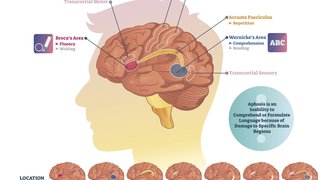How do you make sure your children have a happy life? Allow them to struggle.
by Annie Wiles | Illustration by Robert Neubecker

Dr. Jennifer Hughes has worked with a lot of children, both unhappy and happy ones.
As a clinical psychologist at the University of Texas Southwestern Medical Center with a degree in public health, she delivers programs through Dr. Madhukar H. Trivedi’s rapidly expanding Risk and Resilience Network to 27 schools, reaching somewhere between 7,000 and 8,000 students in the last two years.
She knows kids. She knows the struggles of childhood and adolescence. And she knows suicide is the second leading cause of death among teens.
Her colleagues at UT Southwestern are each fighting their own battle against teen suicide and depression. While Trivedi fights against stagnation in primary care practice and Dr. Betsy Kennard challenges standards of suicide treatment, Hughes, Kennard’s former student, has turned to schools.
Schools can be difficult for researchers to gain access to. Parents have to sign forms. Kids have to bring the forms home for the parents to sign. Schools have to somehow communicate with parents about the forms. It is a whole form thing.
But Trivedi and Hughes’ current project could be the key to cracking into the school system and building one of very few comprehensive, evidence-based prevention programs in the U.S.
“We chose a program that came out of Europe called Youth Aware of Mental Health, which is really one of the few universal mental health prevention programs that has data for impacting youth suicide,” Hughes says.
The program Hughes is testing explores the theory that resilience — or the ability to withstand suffering and bounce back from stress — is essential to child development and will make children less vulnerable to depression. And suicide rates will decrease.
Studies show that people who grew up with high levels of adversity and trauma in their lives tend to have a very low life satisfaction and quality of life as adults; but people who grew up with very little adversity rate their quality of life just as low. The happiest people are those who faced a moderate amount of adversity.
“There’s this idea of, if I shield my child from life adversity, they’re going to end up happier.”
Giving children the opportunity to struggle allows them to test their own strength in overcoming obstacles. They also build essential problem-solving skills, come to grips with the concept of failure, and learn that they can recover from loss.
Helicopter parenting prevents children from learning any of these key developmental processes.
“There’s this idea of, if I shield my child from life adversity, they’re going to end up happier,” Hughes says. “But at least one piece of data we have doesn’t really bear that out. So I always joke when I give parent talks, one of the goals of my career is to figure out what is the optimal level of stress that your kids need to have.”
Instead, she works with kids to build empathy and resilience through group sessions that teach key topics around mental health through role-play and experiential learning. The high schoolers learn what mental health means; how their bodies produce physiological reactions to stress and what those mean; how to identify and regulate their emotions and understand their minds and bodies; how to discern between feeling sad and being depressed; how to recognize depression symptoms in themselves and their peers; and when it’s time to ask an adult for help.
The students also give feedback on the program as Hughes continues to track its success and explore options for creating successful outcomes.
Adults don’t often recognize depression in teens, Hughes says. But helping children understand it and watch out for each other can create a huge safety network. And bulking up their resilience muscle, as she calls it, will equip them with buoyancy through the turbulent waters of adolescence.
As Hughes and her colleagues at UT Southwestern work to figure out what the different subtypes of depression are; how much is chemical and biological, how much is environmental, and how much is genetic; and what the right treatments are, the priority is to put in place comprehensive screening and prevention programs.
“So that we are catching kids as soon as the depression starts, rather than them suffering and not being diagnosed for months or years at a time,” Hughes says.
“Because any minute you spend depressed as a kid, you risk not hitting a developmental milestone you should be hitting.”














